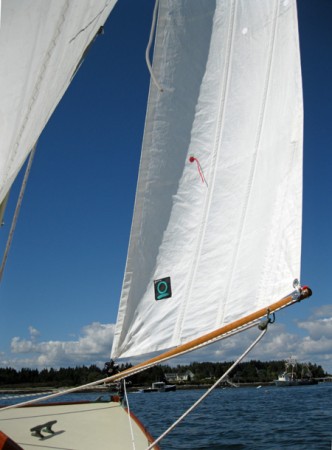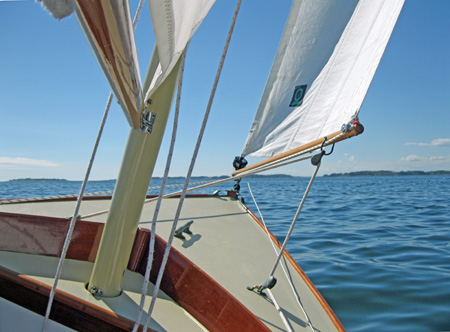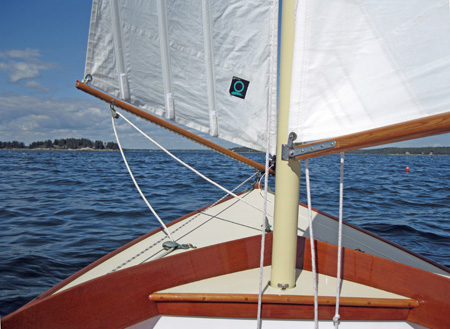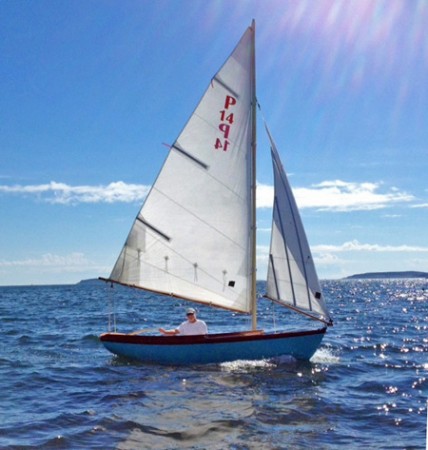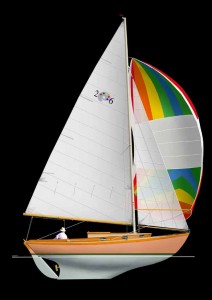
The PAINE DVT are those parallel stripes in the jib.
A few years ago I invented the Paine DVT for use on my PAINE 26. (Stands for Dang Vang Thangs). The idea is to find an alternative to the Hoyt Jib Boom for jib vanging. Especially with boomed jibs, when you let the sheet out, the jib does not go out, but up- with the result that the whole top of the jib becomes ineffective. The Hoyt boom works beautifully, but is expensive, ugly, and a huge impediment to being on the foredeck, even when the jib is furled. My DVT are a series of stiff battens that run parallel to the headstay. Their top ends act as battens to flatten the leech of the jib. But it is my hope and expectation that they will effectively prevent the clew of the jib rising up as the sheet is eased. Well, I’m now into the experimental stage, and am fitting the company PAINE 14 demonstrator with the DVT, and will let you know in one week how they work out. Fingers crossed!
